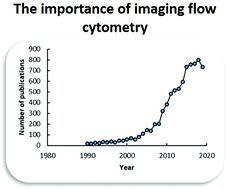Progressive use of multispectral imaging flow cytometry in various research areas
Abstract
Multi-spectral imaging flow cytometry (MIFC) has become one of the most powerful technologies for investigating general analytics, molecular and cell biology, biotechnology, medicine, and related fields. It combines the capabilities of the morphometric and photometric analysis of single cells and micrometer-sized particles in flux with regard to thousands of events. It has become the tool of choice for a wide range of research and clinical applications. By combining the features of flow cytometry and fluorescence microscopy, it offers researchers the ability to couple the spatial resolution of multicolour images of cells and organelles with the simultaneous analysis of a large number of events in a single system. This provides the opportunity to visually confirm findings and collect novel data that would otherwise be more difficult to obtain. This has led many researchers to design innovative assays to gain new insight into important research questions. To date, it has been successfully used to study cell morphology, surface and nuclear protein co-localization, protein–protein interactions, cell signaling, cell cycle, cell death, and cytotoxicity, intracellular calcium, drug uptake, pathogen internalization, and other applications. Herein we describe some of the recent advances in the field of multiparametric imaging flow cytometry methods in various research areas.

- This article is part of the themed collection: Analyst Review Articles 2021


 Please wait while we load your content...
Please wait while we load your content...